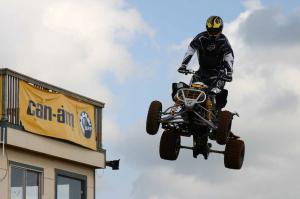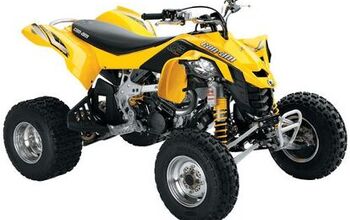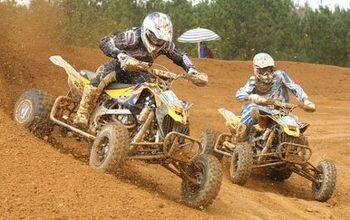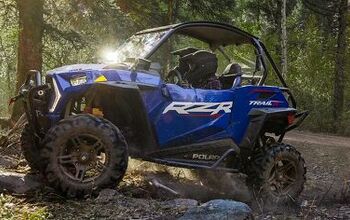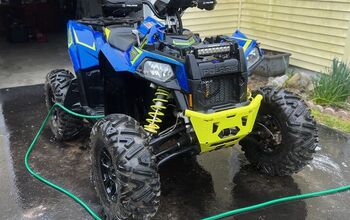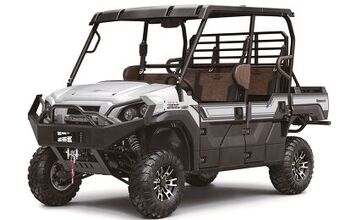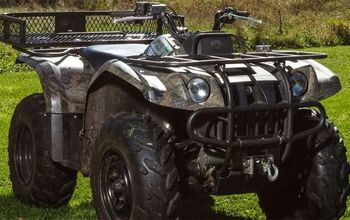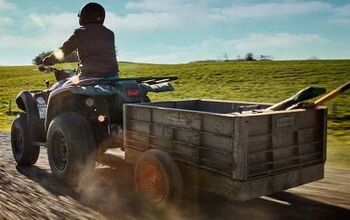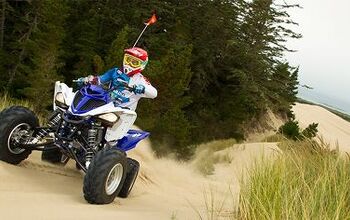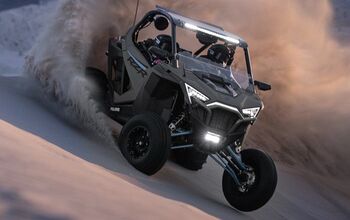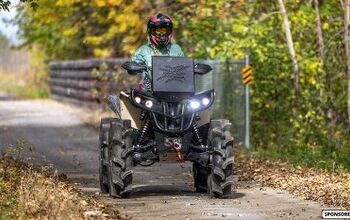2009 Can-Am DS 450 Review
The race element in Can-Am’s lineup is being pushed to the forefront with the introduction of the revamped DS 450 model. I had a chance to ride a pre-production unit at a test track in Texas this summer and where this bike shines is in its ability to be competitive right out of the dealer’s showroom.
This Can-Am attribute is important for two reasons – one that’s obvious, the other less so, yet equally important to the business as a whole. When a race bike can go from the crate to the track in the same day it encourages those riders who want to race for fun to do it. This in turn means that a Sunday’s worth of fun doesn’t require a week’s worth of wrenching (not everyone is hard-core) and that leads into the second point – more and more riders will start getting involved in organized racing just for the thrill of it.
For ’09 the DS450 is available as an MX or XC model. The first version lends itself to a straight motocross style track setup while the XC package is tuned to take the uneven abuse of cross-country racing.
The DS 450 is lightweight and lets you fly high.
Both versions of the DS450 start with an aluminum frame that features a dual-pyramidal design. This shape is strong and lightweight; it also uses something call a ‘lock-bolt fastening system’ which cuts the need for welds to a minimum. While it’s not something that occurs to most of us, welds can add several pounds to the weight of a frame; while fasteners do not. This design relies on physics and is made possible with modern computer-generated imaging. This then takes the place of heavy materials, which is how a strong chassis used to be built.
Light weight is a racing necessity but the key (beyond engine power) is the suspension. This is what will keep the rider in the saddle while also not wearing him/her out. The front end on the DS 450 uses a double A-arm, forged aluminum suspension that is anchored to the centre of the frame giving the arms 9.5-inches of travel. Another Can-Am design feature is the placement of the dual-piston calipers. These are inverted and on the inside of the disc, moving the mass, the ball-joints and kingpin axis inside the wheels where they cause less kickback and let the bike track better.
The wider stance of the the DS 450 X mx is designed for the motocross track.
On the racetrack what I noticed was that the DS didn’t dive in the corners under braking (like I thought it would) and once I got back on the throttle the front end pulled back to the straight (neutral) position almost by itself. This is the result of putting the weight at the furthest point on the wheels. It really makes itself felt – and this is what helps in reducing fatigue around the track.
The rear suspension is a swingarm made of cast aluminum with a rising rate linkage driving a hollow Chromoly 4140 rear axle. The rear hubs are also aluminum as is the main chain sprocket. Compression on the rear axle is a cushy 10.2-inches.
Adjusting the shocks to your size and riding style is a snap.
KYB HPG piggyback shocks are what give the DS its firm, yet forgiving ride, (something you’ll appreciate when you go for the double jump and land short). These shocks are aluminum bodied and have a rebound and a threaded preload adjustment. This feature is key because no two riders weigh the same or ride the same. By experimenting with these two adjustments each owner can dial-in their DS to their personal riding needs.
While I was in Texas the Can-Am techs made a point of adjusting these shocks for each rider. That made the testing of the DS more real-world; but it also showed me how it was done and frankly how easy it is. After each lap on the track we’d spend a minute or two making adjustments, then I’d run the circuit again to compare. After three trips back to the pit area for minor changes I was nicely setup.
The power pushing the DS is derived from the Rotax V990 engine that’s used in some sport bikes. This block houses a large single piston and an EFI system that compensates for both temperature and altitude. The crankcase, clutch and transmission are built to take the pounding of off-road riding and (on a personal note) the transmission is very forgiving – with long gears that offer a range of speed with few shifts.
The powerful 450cc engine gets you moving in a hurry.
With its low weight and aggressive valves and double camshaft the power just snaps as you hit the throttle – getting this bike airborne when you need it – and sometimes when you don’t. Of course for racing that is what you want – but there is a learning curve so be prepared and wear padding.
The key differences between the XC and MX versions are track width (46-inches for cross-country while the track can extend to 50-inches for MX). The front end of the DS also uses shims (one degree of adjustment for each shim) to change the camber angle of the steering wheels. This again allows a personal setup – and it’s easy to do. The width of the rear axle is also adjustable – and many of the racers I talked to like to have a slightly narrower rear axle placement while on the motocross track. They find this gives them better steering in and out of corners. With the DS these adjustments are possible and fairly easy.
Aluminum nerf bars come right from the factory (these are a requirement for any motocross-style racing) so no need to go to the aftermarket. Also another item riders go to the aftermarket for is skidplates – these too are factory supplied on the MX version of the DS.
Tires are different in each version – as you would expect. XC tires are a rugged 20-inch design with aggressive cross-country lugs, while the MX tire is a stiffer, low profile 18-inch tire with an inner reinforcement ring that resists the stresses of high-speed cornering.
| 2009 Can-Am DS 450 Specs | |
| Engine: | 449.3cc single cylinder, liquid-cooled, DOHC, 4-valve “high-flow”, EFI |
| Transmission: | Five-speed manual/Head-duty clutch. Nine friction plates with a DirectLink mechanism |
| Drive Train: | 520 O-ring high capacity chain, aluminum sprocket hub, aluminum hub, rigid axle. |
| Length: | 72.4 in |
| Width: | 46.0 in |
| Wheelbase: | 50.0 in |
| Seat Height: | 33.0 in |
| Ground Clearance: | 9.0 in |
| Dry Weight: | 345 lbs |
| Base MSRP: | $7,499 |
Related Reading:
More by ATV.com Staff



